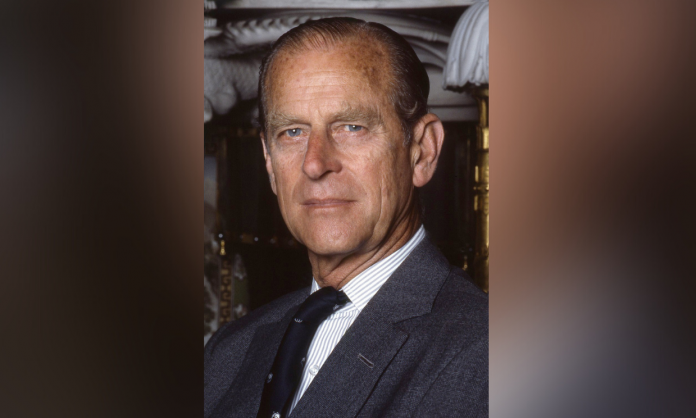By Aileen Atcheson
It is difficult to think of Prince Philip, Duke of Edinburgh, dead. He seemed to be always by Queen Elizabeth’s side. His pedigree was royal through and through. The way in which he entered the world was unusual. On June 10th, 1921, he was born on the kitchen table in Mon Repos, a villa on the island of Corfu, Greece.
His father was Prince Andrew of Greece, a brother of the Greek king, Constantine 1. He was therefore sixth in line to the Greek throne. His mother, Princess Alice, was royal as well. Her great-great-grandmother was Queen Victoria, and her sister, Louise, became Queen of Sweden. Her two younger brothers became the 2nd Marquess of Milford Haven and 1st Earl Mountbatten respectively. Prince Philip had four older sisters and he was a much loved and longed for son.
It was a time of political instability in Greece. King Constantine was forced to abdicate, and following a military coup, Prince Andrew was sentenced to death. His British cousin, King George V, intervened and had the family rescued by a navy ship. Philip travelled to safety in a cradle made from an orange box. The family was allowed to take only very little with them. They settled in Paris, where Princess Alice ran a boutique selling Greek embroidery and honey.
In 1922, Philip was sent to Cheam, the oldest prep. School in England. Shortly afterwards, his parents separated. His father went to live in Monte Carlo with his mistress. Princess Alice, his mother, suffered a nervous breakdown and was hospitalised for some years. Philip did not see her again for five years.
Philip’s sisters married within a year of each other. Sophie, the youngest, was the first to marry, aged only sixteen. Hitler’s rise encouraged the sisters to send Philip back to England. A Jewish headmaster, Kurt Hahn, also went to England to escape the Nazis and set up Gordonstoun School in Scotland. Philip became one of its first pupils.
At the end of each term, he crossed the continent alone. There was more tragedy awaiting him. In November 1937, his sister Cecile, pregnant with her fourth child, George and their two young sons were killed on the way to a wedding in England. The aircraft crashed into a factory chimney.
The only living member of Cecile’s family to survive was her daughter, Johanna, deemed too young to attend the wedding. Twenty months after being orphaned, the little girl died of meningitis. Philip met his parents at the funerals, but had little contact with them from then on. He moved between relatives’ homes. His uncle George, Marquess of Milford Haven, assumed the role of Philip’s father. Less than a year after the plane crash, George died of cancer.
Asked what he wanted to do when he finished school, Philip thought it best to go into the services. The six years of warfare helped him acquire a sense of purpose, and he never resorted to self-pity. In 1934, Philip met Elizabeth, heiress presumptive to the English throne, when both attended Princess Marina of Greece’s wedding to the Duke of Kent, an uncle of Princess Elizabeth. Philip then went to sea with the Royal Navy and Elizabeth and her sister, Margaret, spent the time at Windsor Castle. The Princess kept a photo of Philip on the mantelpiece in her bedroom.
On his return from the Far East, Philip, an officer at a navy base, visited the royal family on many weekends and stayed for six weeks at Balmoral. It was during this time at Balmoral that he proposed to Elizabeth, and she accepted straight away. Elizabeth’s father, King George VI, insisted the engagement announcement be postponed until after the royal family returned from a three month tour of South Africa. In July 1947, the official announcement of the engagement was made, and the princess showed off her engagement ring, which was designed by Philip.
The wedding was set for November 20th, 1947. The day before, Philip was created Duke of Edinburgh, Earl of Merioneth and Baron Greenwich, with the style of Royal Highness. The wedding took place on a bleak November day. Philip’s sisters were not asked to the wedding, because they were married to German army men.
This rankled for years. Philip resumed his naval duties and shortly afterwards, Elizabeth was pregnant. Prince Charles was born in November 1948. Philip was posted to Malta and Elizabeth flew out to join him for Christmas. For the next two years, she visited there regularly. This was the most normal life she ever enjoyed. She was a navy wife like so many others and was able to do most of the things other women did.
In August 1950, Princess Anne was born. However, King George’s health was declining. Philip was recalled from Malta and Elizabeth had to deputise for her father. She and Philip were on a Commonwealth tour, staying overnight in Treetops in Kenya, when Philip had to break the news of her father’s death to his wife. They returned to England and Philip’s long life of service began. Philip died on April 9, 2021, a few weeks short of his one hundredth birthday. Having requested a simple funeral, he was buried at Windsor where Elizabeth had spent so much of her youth.








